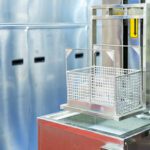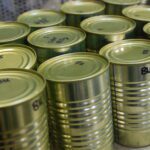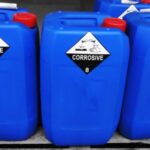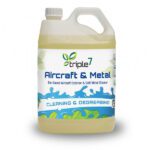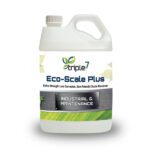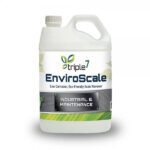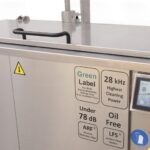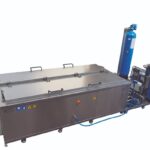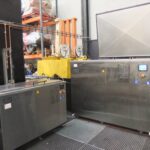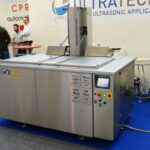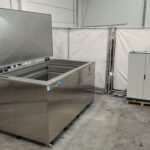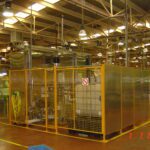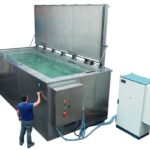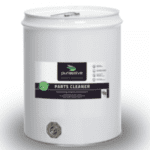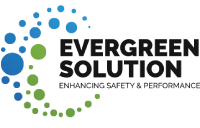Table of Contents
Comprehensive Guide to Effective Heat Exchanger Cleaning
Ensuring the removal of all types of contaminations during heat exchanger cleaning is essential for maintaining optimal performance and efficiency. Regular maintenance is crucial to prevent fouling and sustain their thermal performance, whether they are finned tube heat exchangers, plate heat exchangers, or standard heat exchangers, plate heat exchangers, or standard heat exchangers. This comprehensive guide will walk you through a detailed process for thoroughly cleaning heat exchangers, highlighting common types of contaminants and the steps necessary to address them effectively.
Common Types of Contaminants
- Encrustation: Hard, crusty deposits form on the surfaces of heat exchangers due to mineral-rich water.
- Scaling: Layered deposits typically form from dissolved minerals that precipitate out of the fluid.
- Sediment: Loose particles that settle at the bottom or in the crevices of the heat exchanger.
- Biological Growth: Organic materials like algae, bacteria, and fungi grow on the surfaces, often in cooling water systems.
Step-by-Step Cleaning Process
Step 1: Identify Possible Contaminants
Begin by identifying all potential contaminants present in the heat exchanger. This step helps tailor the cleaning process to address specific issues effectively. For example, finned tube heat exchangers might be more prone to sediment and biological growth, while plate heat exchangers might experience more scaling due to their extensive surface area.
Step 2: Develop a Comprehensive Cleaning Process
Create a cleaning process that targets all identified contaminants. This process should include methods and materials specifically designed to tackle each type of contamination. For instance, chemical cleaning might be more effective for scaling, while pressure washing can handle sediment and encrustation.
Step 3: Prepare the Cleaning System
Assemble the necessary cleaning system components that address all the concerns identified in the previous steps. This system should be capable of handling different types of contaminants effectively. This might include a combination of chemical agents, pressure washing equipment, and specialized tools for reaching difficult areas.
Step 4: Schedule Cleaning Time
Document the time required for each step in the cleaning process. This scheduling ensures that the cleaning operation is systematic and efficient. For instance, finned tube heat exchangers might require more time for thorough cleaning due to their complex structure compared to standard heat exchangers.
Step 5: Execute the Cleaning Process
Carry out the cleaning process according to the planned schedule. Ensure that each step is meticulously followed to achieve thorough cleaning. This involves careful monitoring and adjusting the cleaning parameters as needed.
Step 6: Evaluate Cleaning Efficiency
Evaluate the efficiency of the cleaning process using known parameters such as pressure tests and heat transfer tests. These tests help assess the effectiveness of the cleaning. For example, a significant improvement in heat transfer rates would indicate the successful removal of fouling from a heat exchanger.
Step 7: Document the Process
Create a case sheet documenting the entire cleaning process. This sheet should include observations and potential areas for optimization. This record-keeping helps in understanding the effectiveness of different cleaning methods and materials used.
Step 8: Use Case Sheet for Future Maintenance
Utilize the case sheet as a reference for future heat exchanger maintenance. This documentation helps replicate successful cleaning processes and improve upon them. For example, noting which chemicals were most effective for scaling in a specific type of heat exchanger can streamline future cleanings.
Step 9: Analyze Efficiency and Cleaning Frequency
Analyze the correlation between the cleaning process’s efficiency and the duration of subsequent cleaning operations. This analysis helps determine the optimal cleaning frequency. Heat exchanger manufacturers often provide guidelines, but real-world data from your systems can refine these recommendations.
Step 10: Apply to Different Types of Heat Exchangers
Apply the above steps to different types of heat exchangers to ensure a comprehensive cleaning process across all units. Whether dealing with finned tube heat exchangers, plate heat exchangers, or standard heat exchangers, each type may require slight adjustments in the cleaning approach.
Combining Cleaning Methods for Maximum Output
There are three primary cleaning options for heat exchangers:
- Pressure Washing (Hydrojet): Effective for removing loose debris, sediment, and some biological growth. This method uses high-pressure water jets to dislodge contaminants from the surfaces.
- Chemical Cleaning (Suitable Chemistry): Involves using chemicals to dissolve scales, encrustations, and biological growth. The choice of chemicals depends on the type of fouling and the materials of the heat exchanger.
- Vibronic Cleaning: Combines chemical cleaning with mechanical vibration to enhance the cleaning process. This method is particularly effective for stubborn deposits.
To maximize output, combine these methods into a single, cohesive system. This combined approach ensures thorough cleaning while minimizing downtime. For example, start with pressure washing to remove loose contaminants, followed by chemical cleaning for dissolved scales, and finish with vibronic cleaning to ensure all residues are removed.
The Pulsonication System: Cleaning Standard and Non-Standard Heat Exchangers
The Pulsonication system is an advanced cleaning method that combines ultrasonic technology with special chemistries and a pressure wash rinse. This system achieves two primary objectives:
Effective Contamination Removal:
Ultrasonic waves create microscopic bubbles that implode on the surfaces of the heat exchanger, dislodging contaminants without damaging the equipment.
Minimized Cleaning Time:
The combined effect of ultrasonic waves and tailored chemical solutions provides superior cleaning results in a shorter timeframe compared to traditional methods.
The Pulsonication system is particularly beneficial for heat exchangers with intricate designs, such as plate heat exchangers, where thorough cleaning of all surfaces is challenging with conventional methods.
Further Resources
Our comprehensive E-book delves deep into the Pulsonication system, providing extensive details on its operation, benefits, and applications. This resource is designed to give you a thorough understanding of how ultrasonic cleaning technology can revolutionize your heat exchanger maintenance process. Here’s what you can expect from the E-book:
Detailed Explanation:
Gain insights into the science behind ultrasonic cleaning, including the cavitation process and how it effectively removes contaminants without damaging the equipment.
- Step-by-Step Guidance: Learn about the step-by-step implementation of the Pulsonication system, from preparation and setup to execution and evaluation.
- Case Studies: Explore real-world examples and case studies that showcase the successful application of the Pulsonication system in various industries.
- Comparison with Traditional Methods: Understand how the Pulsonication system compares with traditional cleaning methods in terms of efficiency, effectiveness, and cost savings.
- Best Practices: Discover best practices for maintaining your heat exchangers using the Pulsonication system.
Personalized Guidance from Experts
For more personalized assistance, our team of experts is available to guide you through the entire cleaning process. Here’s how we can help:
- Consultation Services: Schedule a consultation with our experts to discuss your specific heat exchanger cleaning needs. We can help you identify the most effective cleaning solutions and tailor the Pulsonication system to your requirements.
- On-site Support: Our technicians can provide on-site support to ensure the successful implementation of the Pulsonication system. This includes training your staff, setting up the equipment, and overseeing the cleaning process.
- Technical Assistance: Access ongoing technical support to address any questions or challenges.
Ensuring Optimal Performance and Efficiency
Implementing a systematic and comprehensive cleaning process for heat exchangers is crucial for maintaining their optimal performance and efficiency. By following the outlined steps and leveraging advanced cleaning technologies like the Pulsonication system, industries can significantly enhance their maintenance operations. Here’s how:
- Improved Heat Transfer: Regular and thorough cleaning ensures that heat exchangers operate at their peak efficiency, improving heat transfer rates and reducing energy consumption.
- Extended Equipment Lifespan: Effective cleaning prevents the buildup of contaminants that can cause corrosion and wear, thereby extending the lifespan of your heat exchangers.
- Reduced Downtime: A well-maintained heat exchanger is less likely to suffer from unexpected breakdowns, minimizing downtime and ensuring uninterrupted operations.
- Cost Savings: By maintaining optimal performance and preventing damage, regular cleaning reduces maintenance costs and operational expenses in the long run.
Incorporating the Pulsonication system into your maintenance routine enhances the effectiveness of your cleaning processes and provides a sustainable and cost-effective solution for maintaining heat exchangers. For detailed information, practical guidance, and expert support, our E-book and team are invaluable resources that can help you achieve and maintain high standards of heat exchanger performance.
Conclusion
Effective cleaning of heat exchangers, including finned tube heat exchangers, plate heat exchangers, and standard heat exchangers, is crucial for maintaining their efficiency and longevity. Heat exchanger manufacturers emphasize the importance of regular maintenance to prevent fouling and optimize performance. By following a detailed cleaning process, combining different cleaning methods, and utilizing advanced technologies like the Pulsonication system, industries can ensure their heat exchangers operate at peak efficiency, reducing downtime and operational costs.
For more information or to schedule a consultation, contact us or subscribe to our blog and newsletter for the latest insights and advancements in heat exchanger maintenance and cleaning.


